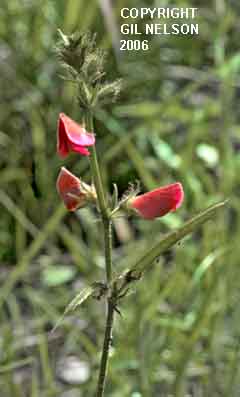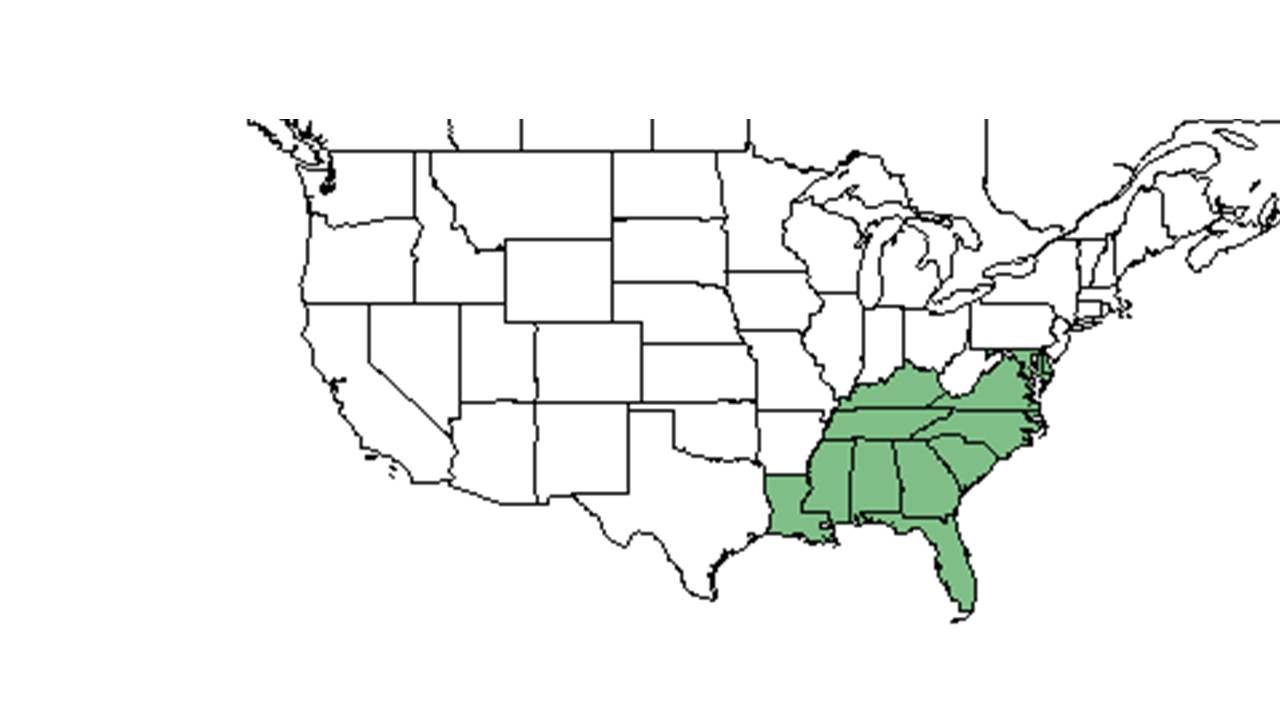Difference between revisions of "Tephrosia spicata"
KatieMccoy (talk | contribs) (→References and notes) |
KatieMccoy (talk | contribs) |
||
| Line 36: | Line 36: | ||
===Seed bank and germination=== | ===Seed bank and germination=== | ||
===Fire ecology=== <!--Fire tolerance, fire dependence, adaptive fire responses--> | ===Fire ecology=== <!--Fire tolerance, fire dependence, adaptive fire responses--> | ||
| + | It has been found in recently burned longleaf pine communities (FSU Herbarium). | ||
| + | |||
===Pollination=== | ===Pollination=== | ||
===Use by animals=== <!--Herbivory, granivory, insect hosting, etc.--> | ===Use by animals=== <!--Herbivory, granivory, insect hosting, etc.--> | ||
Revision as of 13:57, 3 November 2015
| Tephrosia spicata | |
|---|---|

| |
| Photo taken by Gil Nelson | |
| Scientific classification | |
| Kingdom: | Plantae |
| Division: | Magnoliophyta – Flowering plants |
| Class: | Magnoliopsida – Dicotyledons |
| Order: | Fabales |
| Family: | Fabaceae ⁄ Leguminosae |
| Genus: | Tephrosia |
| Species: | T. spicata |
| Binomial name | |
| Tephrosia spicata (Walter) Torr. & A. Gray | |

| |
| Natural range of Tephrosia spicata from USDA NRCS Plants Database. | |
Common name: spiked hoarypea
Contents
Taxonomic notes
Description
Distribution
Ecology
Habitat
Tephrosia spicata can be found in coastal hammocks; wiregrass/pine communities; pine savannas; mixed hardwood forests; longleaf pine-turkey oak hills; turkey oak barrens; and longleaf pine scrub oak sand ridges (FSU Herbarium; Kirkman et al. 2004). It has been found in human disturbed areas such as railroad beds, cut over pine flatwoods, and roadsides. Soil types include loamy sand, sandy loam, clay soil, sand, sandy peat, and sandy clay (FSU Herbarium). Associated species include Phlox floridana, Calamintha dentata, Canna, Sambucus, Aristida stricta, Rhynchospora, Tephrosia floridana and T. chrysophylla (FSU Herbarium).
Phenology
It has been recorded flowering and fruiting May through October (FSU Herbarium).
Seed dispersal
It is dispersed by gravity (Kirkman et al 2004).
Seed bank and germination
Fire ecology
It has been found in recently burned longleaf pine communities (FSU Herbarium).
Pollination
Use by animals
Diseases and parasites
Conservation and Management
Cultivation and restoration
Photo Gallery
References and notes
Florida State University Robert K. Godfrey Herbarium database. URL: http://herbarium.bio.fsu.edu. Last accessed: October 2015. Collectors: W.P. Adams, Loran C. Anderson, Wilson Baker, C. Ritchie Bell, WM. M. CanbyA.F. Clewell, K. Craddock Burks, H.S. Daoud, ,R.A. Davidson, J.A. Duke, J. Kevin England, R.K. Godfrey, J.B. Hilmon, S.C. Hood, Clarke Hudson, C. Jackson, Ed Keppner, Lisa Keppner, R. Komarek, Mabel Kral, R. Kral, O. Lakela, Richard S. Mitchell, R.A. Norris, Kevin Oakes, R.C. Phillips, Gwynn W. Ramsey, James D. Ray Jr., H.R. Reed, A.B. Seymour, Cecil Slaughter, R.F. Thorne, Rodie White, Mary Margaret Williams. States and Counties: Alabama: Geneva, Marengo. Florida: Alachua, Bay, Calhoun, Charlotte, Citrus, Duval, Franklin, Gadsden, Gulf, Hernando, Hillsborough, Jackson, Jefferson, Liberty, Leon, Madison, Marion, Pasco, Polk,Wakulla. Georgia: Grady, Thomas. Maryland: Salisbury. Mississippi: Forrest, Jackson, Marion, Newton, Ocean Springs, Pike, Poplarville. North Carolina: Rutherford, Wayne. South Carolina: Marion. Virginia: Greensville. Compiled by Tall Timbers Research Station and Land Conservancy.
Kirkman, L.K., K.L. Coffey, R.J. Mitchell, and E.B. Moser. 2004. Ground Cover Recovery Patterns and Life-History Traits: Implications for Restoration Obstacles and Opportunities in a Species-Rich Savanna. Journal of Ecology 92:409-421